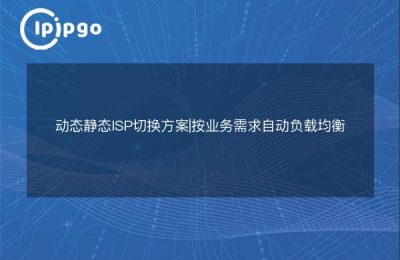
In the boundless ocean of the Internet, a standalone static IP proxy is like an exclusive boat that takes you to the wider cyber world. For those who need to use certain services in an overseas environment, a standalone static IP proxy is undoubtedly a helpful assistant. So, how to set up such a proxy? This article will provide you with a detailed description of how to set up a standalone static IP proxy.
What is a Standalone Static IP Proxy?
Before we start setting up, we need to understand what a standalone static IP proxy is. Simply put, a standalone static IP proxy is a network service that provides users with a fixed IP address. This means that every time you access the network through this proxy, the outside world sees the same IP address. Unlike dynamic IPs, static IPs do not change over time, which is important for application scenarios that require a stable network connection.
Why choose a standalone static IP proxy?
A standalone static IP proxy is more than just a tool, it's like a VIP pass to the online world. Firstly, it provides a stable network connection with a consistent IP address no matter where you are, which is especially important for users who need to work remotely or access specific services. Secondly, a standalone static IP proxy can help you easily manage network traffic and avoid connection problems caused by frequent IP changes.
Steps to set up a standalone static IP proxy
Next, we will explain in detail how to set up a standalone static IP proxy. While it may sound a bit complicated, it's actually easy to do in just a few steps.
Step 1: Choose the right proxy service provider
Before setting up a standalone static IP proxy, you need to choose a reliable proxy service provider. There are many different options on the market, and each provider has different services and prices. When choosing one, you need to take into account factors such as the stability of the service, its speed, and customer support.
Step 2: Obtain an independent static IP address
Once you have selected a proxy service provider, you need to register and purchase the service. Usually, you will receive an individual static IP address and the corresponding port number, which will be used in subsequent setups.
Step 3: Configure network settings
This step is the most crucial part of the whole process. You need to enter the individual static IP address and port number you acquired in the network settings of the device. The exact configuration method may vary depending on the device and operating system. Generally, you can find the "Proxy" option in the network settings and enter the appropriate information.
Step 4: Test the connection
After completing the configuration, you will need to test the connection to make sure everything is working. You can verify that your IP address has been changed to a standalone static IP by visiting certain specific websites. if all goes well, then congratulations, the setup was successful!
Considerations for using a standalone static IP proxy
Although standalone static IP proxies provide users with a lot of convenience, there are still some things you need to pay attention to in the process of using them. First, make sure your proxy service provider is legally compliant to avoid unnecessary trouble. Second, check and update your network settings regularly to ensure the stability and security of your connection.
summarize
Standalone Static IP Proxy provides users with a stable and reliable network environment, which is especially suitable for users who need to use specific services in overseas environment. By choosing the right service provider and configuring the network settings correctly, you can easily enjoy the convenience brought by standalone static IP proxy. Hope this article can help you better understand and use standalone static IP proxy for your network journey.








